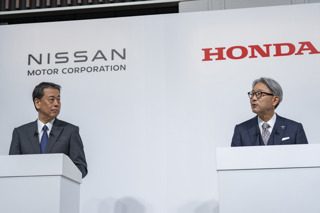Honda is aiming for an increase to between 103,000 and 104,000 UK registrations this year, and believes new product makes it achievable.
The registrations target is based on dealers taking an average market share of 4.4% and Honda says many in the network are achieving 6% in a territory.
In 2006, Honda’s UK car registrations totalled 97,728, representing 4.17% of the market. That compared with 98,344/4.03% in 2005, a decline of 0.65% year-on-year.
Honda and its dealer association chairman say dealers’ targets are based on a new system that takes into account factors relating to individual territories.
Both say the new approach was agreed, and Honda adds that more than 80% of dealers have signed up to the targets – “a higher proportion than ever before at this stage of the year”, says a spokesman.
Targets have been set by Bernard Bradley, Honda UK’s head of sales, who says: “We are still talking to our dealers about the targets, and realize it may take a little time for the new system to settle down.”
One Honda dealer says: “Everyone in the network believes there is scope for sales to grow. But there is some disquiet because Honda is failing to acknowledge the work of some of those dealers punching above their weight.”
Another dealer says: “There is pressure on dealers who last year worked hard to achieve penetration above Honda’s UK market share.
It is somehow assumed that dealers can do even better in a new year, and that is not always possible.”
Gary Peters, chairman of the Honda dealer association and a director of Thames Honda, says: “Honda has matched dealers’ targets to local opportunities. But we are still talking to manufacturer about the detail, and the system can be modified as we go along.”
Some Honda dealers are concerned that the UK will be expected to act as “a safety net” as production at the Swindon plant is increased.
They point to the SMMT’s forecast that registrations will be slightly lower than in 2006.

















Login to comment
Comments
No comments have been made yet.